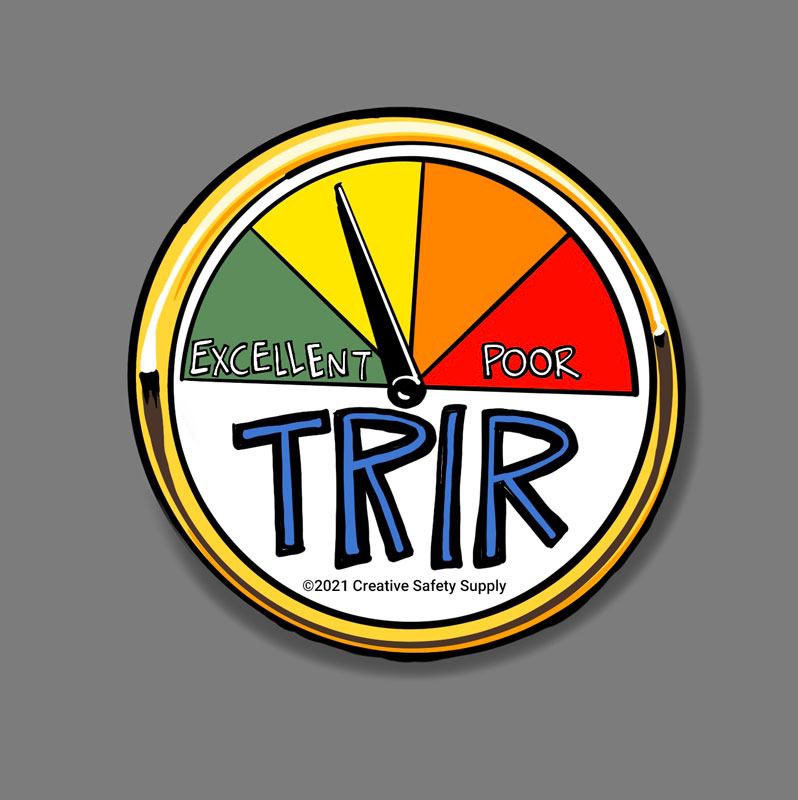
TRIR stands for Total Recordable Incident Rate. Also known as Total Case Incident Rate, TRIR is a key metric for evaluating the organization’s safety performance from the past year. It is a lagging indicator created by OSHA and used additionally for comparing safety performances of organizations within a particular industry. With TRIR, the lower the number the better your safety performance is.
How is TRIR calculated?
The formula from OSHA is as follows:
(Number of Incidents x 200,000) / total number of hours worked in a year

So, where does OSHA get these numbers from? The number used for incidents include any work-related injury or illness that results in death, loss of consciousness, days away from work, restricted work activity, or medical treatment beyond first aid. 200,000 is the benchmark OSHA established representing the total number of hours 100 employees would log in 50 weeks in a standard 40-hour work week.
By dividing the product of those numbers by the total number of hours worked in a year, those doing business with your company will have a standardized understanding of how your safety program compares to your industry or your competitors.
The Total Recordable Incident Rate is key to ensuring you are providing employees with a safe workplace free from recognized hazards. A poor TRIR score can lead to an increase in surprise OSHA inspections or even higher insurance premiums. According to the Bureau of Labor Statistics, the TCIR for private industry employers in 2017 was a rate of 2.8 cases per 100 employees. If your TRIR score is high, it is probably time to overhaul your safety program.
Do you know what your company’s TRIR is? Easily find out with our free calculator! Our OSHA Incident Rate calculator to compare your company’s safety performance against a national or state average.
Additional TRIR facts:
- TRIR stands for Total Recordable Incident Rate, a metric used to assess a company’s safety performance over the course of a year. The lower the TRIR, the better the company’s safety performance is considered to be. Source: https://www.safeopedia.com/definition/9653/total-recordable-incident-rate-trir
- TRIR is calculated by multiplying the number of recordable incidents by 200,000 and dividing by the number of hours worked by all employees in the same period. The 200,000 factor represents the number of hours worked by 100 employees in 50 weeks. Source: https://mycomply.net/info/blog/trir-calculation/
- A recordable incident is any work-related injury or illness that requires medical treatment beyond first aid, results in days away from work, restricted work or transfer to another job, loss of consciousness, or death. Source: https://planhub.com/resources/what-is-total-recordable-incident-rate-trir/
- TRIR is used by OSHA and other regulatory agencies to compare and benchmark the safety performance of companies within industries or groups. High TRIR rates may indicate a higher risk of inspections, fines, or penalties. Source: https://mycomply.net/info/blog/trir-calculation/
- TRIR can also be used internally by companies to monitor and improve their safety efforts, identify areas of concern, and set safety goals and targets. Source: https://www.urbint.com/blog/what-is-a-good-total-recordable-incident-rate
Similar Questions
- What Does TRIR Stand For?
- Why Does TRIR Matter?
- Why is OSHA such an important association?
- What agency of government is OSHA in?
- What records does OSHA require an employer to have on hand?
- Who is OSHA meant to protect?
- Are OSHA inspections random?
- When was OSHA developed?
- What does OSHA stand for?


